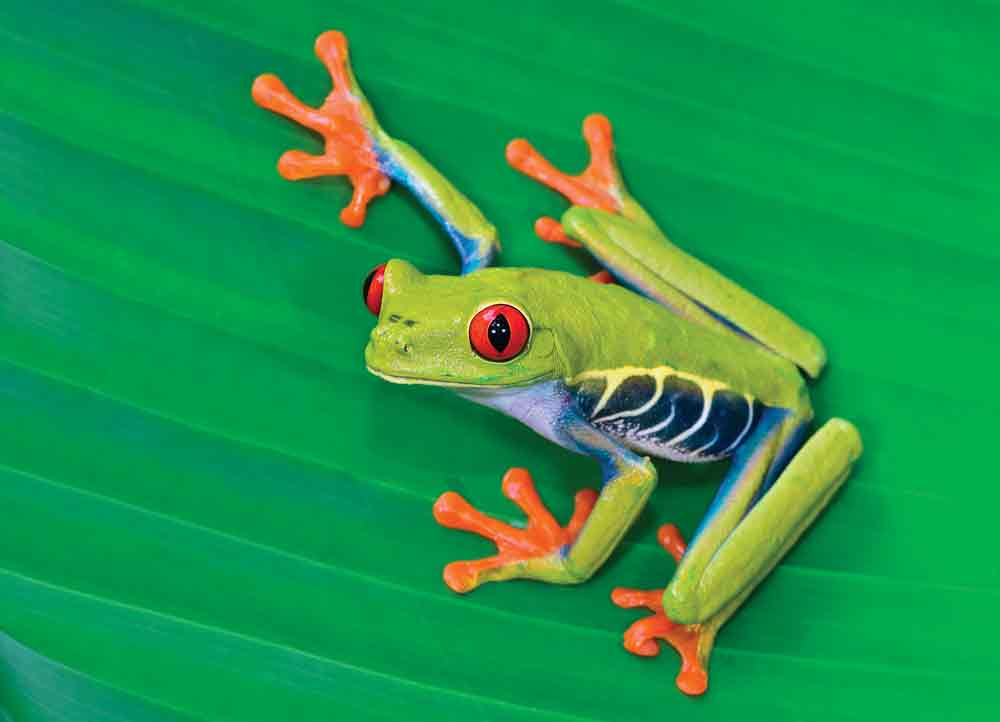The red-eyed tree frog (Agalychnis callidryas) is a visually striking and iconic species of tree frog native to the rainforests of Central America, including parts of Mexico, Costa Rica, Nicaragua, Panama, Honduras, and Colombia. Here are some key characteristics and interesting facts about the red-eyed tree frog:
- Appearance:
- Vibrant Colors: One of the most distinctive features of this frog is its vibrant and striking coloration. It has bright green skin on its upper side with blue and yellow stripes and orange toes.
- Red Eyes: As the name suggests, the frog has large, bright red eyes with vertical pupils.
- Size:
- Adult red-eyed tree frogs are relatively small, with females being larger than males. They typically range from 2 to 3 inches (5 to 7.5 centimeters) in length.
- Habitat:
- These frogs are primarily arboreal, meaning they spend the majority of their time in trees. They are commonly found in tropical rainforests near ponds, lakes, and other still water bodies.
- Nocturnal Behavior:
- Red-eyed tree frogs are primarily nocturnal, meaning they are most active during the night. During the day, they hide in the foliage of trees to avoid predators.
- Diet:
- Their diet consists mainly of insects, such as crickets and moths. They use their long, sticky tongue to catch prey.
- Reproduction:
- Breeding typically takes place in the rainy season. The females lay their eggs on the leaves above water, and when the eggs hatch, the tadpoles fall into the water below.
- Defensive Behavior:
- When threatened, the red-eyed tree frog has a unique defensive behavior. It flashes its bright red eyes and reveals its vibrant colors, which can startle or confuse predators.
- Conservation Status:
- While they are not currently considered endangered, red-eyed tree frogs face threats from habitat loss due to deforestation and pollution. They are also popular in the pet trade, which can impact wild populations if not managed sustainably.
- Cultural Significance:
- Due to their striking appearance, red-eyed tree frogs are often featured in advertisements, educational materials, and as symbols of rainforest conservation.
Observing a red-eyed tree frog in its natural habitat or in captivity can be a fascinating experience due to its unique appearance and interesting behaviors.
